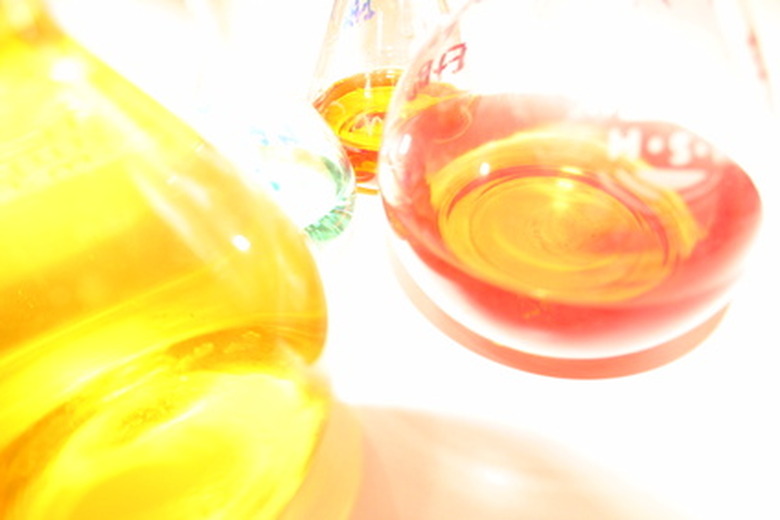How Is Titration Different From Colorimetry?
Both titration and colorimetry commonly use color observations to determine the unknown quantity of a substance. However, the underlying mechanism causing the observed color is different for each laboratory method.
Titration
Titration
A substance of known concentration, an acid for example, is added to a substance of unknown concentration, a base for example, until an indicator undergoes a color change showing that the acid and base are present in a known proportion. By measuring the volume of acid added during the titration, the amount of base present can be calculated.
Colorimetry
Colorimetry
Different substances absorb specific wavelengths of light, leaving the complementary colors to be seen. As light passes through a substance of unknown concentration, the amount of light absorbed is proportional to the amount of substance present. So concentration can be calculated by the measured absorbency or the observed color intensity.
Differences
Differences
The color change observed during a titration indicates that the two substances involved have interacted in a particular way. The unknown quantity of one substance can be calculated from the known quantity of the other substance. The intensity of color observed during colorimetry indicates the amount of light absorbed by the given substance and by extension the amount of substance present.
References
Cite This Article
MLA
Stai, Sandy. "How Is Titration Different From Colorimetry?" sciencing.com, https://www.sciencing.com/titration-different-colorimetry-7176588/. 24 April 2017.
APA
Stai, Sandy. (2017, April 24). How Is Titration Different From Colorimetry?. sciencing.com. Retrieved from https://www.sciencing.com/titration-different-colorimetry-7176588/
Chicago
Stai, Sandy. How Is Titration Different From Colorimetry? last modified March 24, 2022. https://www.sciencing.com/titration-different-colorimetry-7176588/
